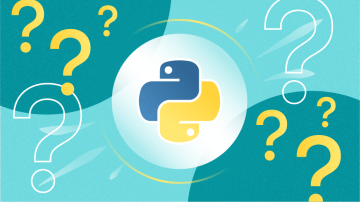Applications typically include some type of default or "out-of-the-box" state or configuration, as well as some way for users to customize that configuration for their needs.
For example, LibreOffice Writer gives access to stuff like user data, fonts, language settings, and (much) more through Tools > Options on its menu bar. Some applications (like LibreOffice) provide a point-and-click user interface to manage these settings. Some, like Tracker (the GNOME task that indexes files), use XML files. And some, especially JavaScript-based applications, use JSON, despite the protestations of many (for example, this writer and this other writer).
In this article, I'll sidestep the debate about whether or not to use JSON as a configuration file format and explain how to parse this kind of information using the Groovy programming language. Groovy is based on Java but with a different set of design priorities that make Groovy feel more like Python.
Install Groovy
Since Groovy is based on Java, it also requires a Java installation. You might find recent and decent versions of Java and Groovy in your Linux distribution's repositories. Or you can install Groovy following the instructions on its website. A nice alternative for Linux users is SDKMan, which you can use to get multiple versions of Java, Groovy, and many other related tools. For this article, I'll use my distro's OpenJDK11 release and SDKMan's Groovy 3.0.7 release.
The demo JSON configuration file
For this demonstration, I snagged this JSON from Drupal—it's the main configuration file used by the Drupal CMS—and saved it in the file config.json:
{
"vm": {
"ip": "192.168.44.44",
"memory": "1024",
"synced_folders": [
{
"host_path": "data/",
"guest_path": "/var/www",
"type": "default"
}
],
"forwarded_ports": []
},
"vdd": {
"sites": {
"drupal8": {
"account_name": "root",
"account_pass": "root",
"account_mail": "box@example.com",
"site_name": "Drupal 8",
"site_mail": "box@example.com",
"vhost": {
"document_root": "drupal8",
"url": "drupal8.dev",
"alias": ["www.drupal8.dev"]
}
},
"drupal7": {
"account_name": "root",
"account_pass": "root",
"account_mail": "box@example.com",
"site_name": "Drupal 7",
"site_mail": "box@example.com",
"vhost": {
"document_root": "drupal7",
"url": "drupal7.dev",
"alias": ["www.drupal7.dev"]
}
}
}
}
}This is a nice, complex JSON file with several levels of structure, like:
<>.vdd.sites.drupal8.account_nameand some lists like:
<>.vm.synced_foldersHere, <> represents the unnamed top level. Let's see how Groovy handles that.
Parsing JSON with Groovy
Groovy comes with the groovy.json package, which is full of all sorts of cool stuff. One of the best parts is the JsonSlurper class, which includes several parse() methods that convert JSON to a Groovy Map—a data structure with values stored against keys.
Here's a nice, short Groovy program named config1.groovy that creates a JsonSlurper instance, then calls one of its parse() methods to parse the JSON in a file and convert it to a Map instance called config, and finally writes out that map:
import groovy.json.JsonSlurper
def jsonSlurper = new JsonSlurper()
def config = jsonSlurper.parse(new File('config.json'))
println "config = $config"Run this program on the command line in a terminal:
$ groovy config1.groovy
config = [vm:[ip:192.168.44.44, memory:1024, synced_folders:[[host_path:data/, guest_path:/var/www, type:default]], forwarded_ports:[]], vdd:[sites:[drupal8:[account_name:root, account_pass:root, account_mail:box@example.com, site_name:Drupal 8, site_mail:box@example.com, vhost:[document_root:drupal8, url:drupal8.dev, alias:[www.drupal8.dev]]], drupal7:[account_name:root, account_pass:root, account_mail:box@example.com, site_name:Drupal 7, site_mail:box@example.com, vhost:[document_root:drupal7, url:drupal7.dev, alias:[www.drupal7.dev]]]]]]
$The output shows a top-level map with two keys: vm and vdd. Each key references its own map of values. Notice the empty list referenced by the forwarded_ports key.
Huh. That was easy, but all it did was print things out. How do you get at the various components? Here's another program that shows how to access the value stored at config.vm.ip:
import groovy.json.JsonSlurper
def jsonSlurper = new JsonSlurper()
def config = jsonSlurper.parse(new File('config.json'))
println "config.vm.ip = ${config.vm.ip}"Run it:
$ groovy config2.groovy
config.vm.ip = 192.168.44.44
$Yup, that's easy, too. This takes advantage of Groovy shorthand that means:
config.vm.ipin Groovy is equivalent to:
config['vm']['ip']when config and config.vm are both instances of Map, and both are equivalent to:
config.get("vm").get("ip")in Java.
So much for just handling the JSON. What if you want to have a standard configuration and let the user override it? In that case, you might want to have a JSON configuration hard-coded in the program, then read the user configuration and override any of the standard configuration settings.
Say the above configuration is standard, and the user wants to override only a bit of it, just the ip and memory values in the vm structure, and put that in the userConfig.json file:
{
"vm": {
"ip": "201.201.201.201",
"memory": "4096",
}
}You could do that using this program:
import groovy.json.JsonSlurper
def jsonSlurper = new JsonSlurper()
// use parseText() to parse a string rather than reading from a file
// this gives us the “standard configuration”
def standardConfig = jsonSlurper.parseText("""
{
"vm": {
"ip": "192.168.44.44",
"memory": "1024",
"synced_folders": [
{
"host_path": "data/",
"guest_path": "/var/www",
"type": "default"
}
],
"forwarded_ports": []
},
"vdd": {
"sites": {
"drupal8": {
"account_name": "root",
"account_pass": "root",
"account_mail": "box@example.com",
"site_name": "Drupal 8",
"site_mail": "box@example.com",
"vhost": {
"document_root": "drupal8",
"url": "drupal8.dev",
"alias": ["www.drupal8.dev"]
}
},
"drupal7": {
"account_name": "root",
"account_pass": "root",
"account_mail": "box@example.com",
"site_name": "Drupal 7",
"site_mail": "box@example.com",
"vhost": {
"document_root": "drupal7",
"url": "drupal7.dev",
"alias": ["www.drupal7.dev"]
}
}
}
}
}
""")
// print out the standard configuration
println "standardConfig = $standardConfig"
// read in and parse the user configuration information
def userConfig = jsonSlurper.parse(new File('userConfig.json'))
// print out the user configuration information
println "userConfig = $userConfig"
// a function to merge the user configuration with the standard
def mergeMaps(Map input, Map merge) {
merge.each { k, v ->
if (v instanceof Map)
mergeMaps(input[k], v)
else
input[k] = v
}
}
// merge the configurations and print out the modified
// standard configuration
mergeMaps(standardConfig, userConfig)
println "modified standardConfig $standardConfig"Run this as:
$ groovy config3.groovy
standardConfig = [vm:[ip:192.168.44.44, memory:1024, synced_folders:[[host_path:data/, guest_path:/var/www, type:default]], forwarded_ports:[]], vdd:[sites:[drupal8:[account_name:root, account_pass:root, account_mail:box@example.com, site_name:Drupal 8, site_mail:box@example.com, vhost:[document_root:drupal8, url:drupal8.dev, alias:[www.drupal8.dev]]], drupal7:[account_name:root, account_pass:root, account_mail:box@example.com, site_name:Drupal 7, site_mail:box@example.com, vhost:[document_root:drupal7, url:drupal7.dev, alias:[www.drupal7.dev]]]]]]
userConfig = [vm:[ip:201.201.201.201, memory:4096]]
modified standardConfig [vm:[ip:201.201.201.201, memory:4096, synced_folders:[[host_path:data/, guest_path:/var/www, type:default]], forwarded_ports:[]], vdd:[sites:[drupal8:[account_name:root, account_pass:root, account_mail:box@example.com, site_name:Drupal 8, site_mail:box@example.com, vhost:[document_root:drupal8, url:drupal8.dev, alias:[www.drupal8.dev]]], drupal7:[account_name:root, account_pass:root, account_mail:box@example.com, site_name:Drupal 7, site_mail:box@example.com, vhost:[document_root:drupal7, url:drupal7.dev, alias:[www.drupal7.dev]]]]]]
$The line beginning modified standardConfig shows that the vm.ip and vm.memory values were overridden.
Sharp-eyed readers will notice that I did not check for malformed JSON , nor was I careful to ensure that the user configuration makes sense (doesn't create new fields, provides reasonable values, and so on). So the cute little recursive method to merge the two maps probably isn't all that practical in the real world.
Well I had to leave something for homework, didn't I?
Groovy resources
The Apache Groovy site has a lot of great documentation. Another great Groovy resource is Mr. Haki. And a really great reason to learn Groovy is to go on and learn Grails, which is a wonderfully productive full-stack web framework built on top of excellent components like Hibernate, Spring Boot, and Micronaut.











Comments are closed.